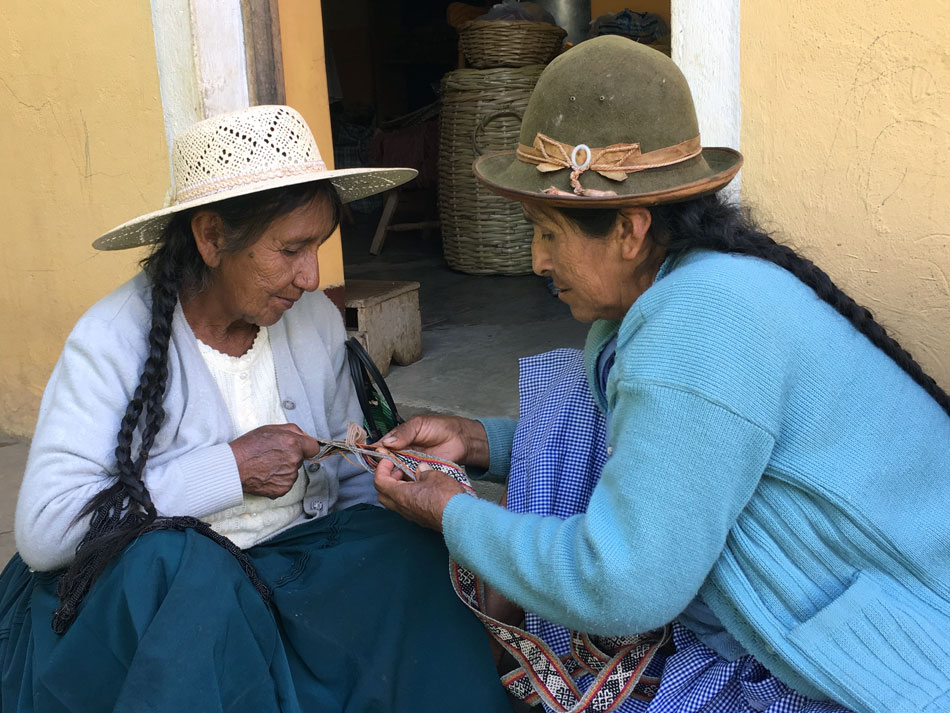

On February 18 I flew to Panama City and checked in at the Country Inn & Suites. Whom should I find the in the lobby but Susan! What a surprise! Well, not really. She had arrived that morning after two weeks in Colombia (see below) and we were heading for Bolivia the next day. We had just enough time to see the Panama Canal. It actually runs south-north. We were at the south end, the Miraflores locks. Along with a big crowd, we watched the water float up a big ship one level for its voyage to the next ocean. The canal is being expanded; soon it will be ready for yet larger and longer ships.
Hotel elevator cautionary note: “Do not use in case of earthquake.”
We had never been to Bolivia. It is a very varied place, with rivers, jungle and snow peaks. It is also one of the poorest countries on the continent, although it has made much recent progress, and it has the highest proportionate indigenous population. Unusually for a South American country, it requires a visa for entry of U.S. citizens, just as we demand of them. As you can see here, Bolivia wants quite a lot from its American visitors. And by the way--we did renew our yellow fever protection, but nobody in Bolivia or elsewhere asked to see those yellow health cards.
We landed in Santa Cruz, Bolivia, at 10:00 p.m. Our local tour agency, Magri Turismo, whisked us away some distance to the five-star Hotel Cortez. It was adequate, but we thought that stars must be easy to find in the country. Not that it much mattered: our flight to Sucre left at 7:30 next morning. En route to the hotel, our guide provided some practical information, slightly embellished in this report:
--beware of criminals;
--don’t trust the police;
--don’t carry your passport, only a copy of the front page;
--mosquitoes are most active early morning and evening. Do not be bitten by them.
Sucre, population 300,000 more or less, is over 9000 feet high and reputed to be the country’s most beautiful city. Here we had our first Bolivian lunch, at a vegetarian restaurant, which featured empanadas and potatoes, two standards. In general we found the meals to be abundant, inexpensive and of limited variety. Our first dinner was at La Taverna, run by the Alliance Française, but still Bolivian. On the way home we were drenched by a furious shower. The rainy season reaches well into March. We could not have a drink with our meal, because all alcohol sales as well as most motorized traffic had been prohibited in anticipation of Sunday’s major referendum. The question was whether to amend the constitution so that Evo Morales could extend his already lengthy term from 2020 into 2025. Voting is compulsory and, at least where we could see, orderly. There had been extensive publicity: almost every wall had a “No” or “Evo si” painted somewhere. Although the question was officially a constitutional one, it was really about Evo. He is the country’s first indigenous head of state. At dinner referendum day we watched the returns on television: 49% yes, 51% no. We found this surprising and alarmingly close: too much room for manipulation. But the margin widened, and Evo and the country took the verdict quietly. He is still popular, but was hurt by among other things “plunging commodity prices and an influence-peddling scandal involving Morales’ former girlfriend, 27-year-old Gabriela Zapata, whose lack of a university degree has not prevented her from heading a Chinese-financed company that has received $500 million in government contracts. She and Morales have a child together” (who may or may not be alive).
The craft museum (Museo de Arta Indigena) is large and highly recommended, especially by Susan.
The next day, with the roads open again, we were driven two and a half hours east to the Maragua Crater to look for dinosaur footprints. Bolivian roads are of two types: paved and not. The paved ones are well-marked (center strips) and comfortable. The others: dirt, sometimes smooth, sometimes rocky. Because of the mountains, they can also be twisty and precipitous. But at least you can tell where the roadbed is--that’s better than Mongolia.
Our guide was Jorge, at age 31 living with his 23-year-old girlfriend, a law student. This is an unusual arrangement--most Bolivian men of his age are married. Jorge was ambitious: he had a plan to buy ten hot-air balloons and float them for tourists over the salt flats, one of the country’s great attractions. He was spiritually adventurous as well, having professed many religions, including Islam and Mormonism. He is currently a Gnostic.
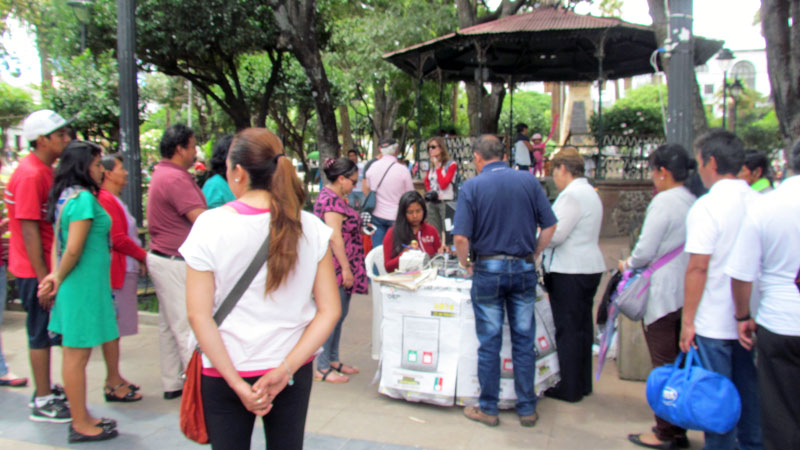
We saw no dinosaur footprints--perhaps the creatures had taken time off for the referendum--but we did take a brief, airy hike to the Devil’s Mouth. Here, high on a hillside studded with waterfalls, was a perfect site for human sacrifice. The heads tumbled into a niche, the bodies down the slope. On the way back we visited a 99-year-old woman, who says she is only 98. You can see her photograph in the New York Times travel section, March 27, 2016. She still tends her garden, plus cats, dogs and rabbits. The cats were unusual, as many Bolivians consider them bad luck.
The two and a half-hour return trip was followed almost immediately by an even longer drive to the old city of Potosi, once a thriving site for the extraction of silver. With a population of 175,000, at 13,000 feet it is the highest city of its size in the world. It took only two hours to reach its outskirts, but the city has streets narrow from colonial times. They are unsuited for modern vehicles, to put it gently, especially when thronged by people and other animals.
Potosi is spectacular and well worth the drive. It is dominated by Cerro Rico (Rich Mountain), nearly 16,000 feet, the source of all that silver. It was in this town that the country’s currency was minted. You can see this at the expansive mint museum. No free samples.
Back by road to Sucre, then by plane to Cochabamba. There we were met by Susan’s friend, Dorinda Dutcher. Hers is an engrossing story. But wait.
Nosebleed digression: Before I left New York, I developed an intermittent nosebleed. Because Susan was not around to make me sensible, I ignored it. I knew it would go away. It did not. I’ll omit the details--too sensationalistic. But if you ever have trouble with your nose in Cochabamba, here is the address you need (thanks to Dorinda for this discovery):
Dr. Juvenel Villagra Urionia, Calle Antezena No. 424.
A big reason we had chosen Bolivia was to visit Dorinda. Ten years ago, age 50, she had joined the Peace Corps and been sent to Independencia, a small town half way between Cochabamba and La Paz. Her task was to stimulate the tourist trade, but instead she was soon working with local women on weaving and natural dyeing. Two years later, briefly back in Montana, she realized she truly belonged in Independencia; she has been there ever since (eight years).
There is no airport in Independencia or a whole lot else. You won’t find it in the Footprint guidebook that we were using. It does have a small hospital without an x-ray machine and a surprisingly big stadium. The population (several thousand) is almost entirely indigenous. Dorinda is its only American. There is a road from Cochabamba: well-paved some of the way, then dirt and steep. It crosses a pass at perhaps 14,000 feet. So: Dorinda, Susan and I took a taxi to the Cochabamba station (or location). The bus left on time: 5:00 a.m. It was unexpectedly comfortable, but as it filled up, the aisle become home to Bolivians, standing, sitting or occasionally lying. The air cooled as we climbed up to the pass. Around the summit we stopped for our only bathroom break--an open field. Then on and down to Independencia, around 8000 feet. The trip had taken the scheduled time--about eight hours. There remained only an uphill trek on rocky dirt streets to our hotel, the only one in town. Our rooms included electricity, running water when it ran, bathroom and a kitchen. They were serviceable, though they could have been cleaner.
We were there five days. My role was limited. I had offered to tutor schoolchildren in Math and English, but this proved unworkable. I did a bit of flower and leaf picking for the current dyeing project. One day we drove into the hills, green from the rains, to pick more flowers (bright yellow). We descended to a really poor little home (although the family could be considered wealthy because they owned sheep), where Dorinda’s principal associate, Doña Maxima, negotiated for three kilograms of alpaca fleece. Then a typical lunch of potato, rice, avocado and eggs.
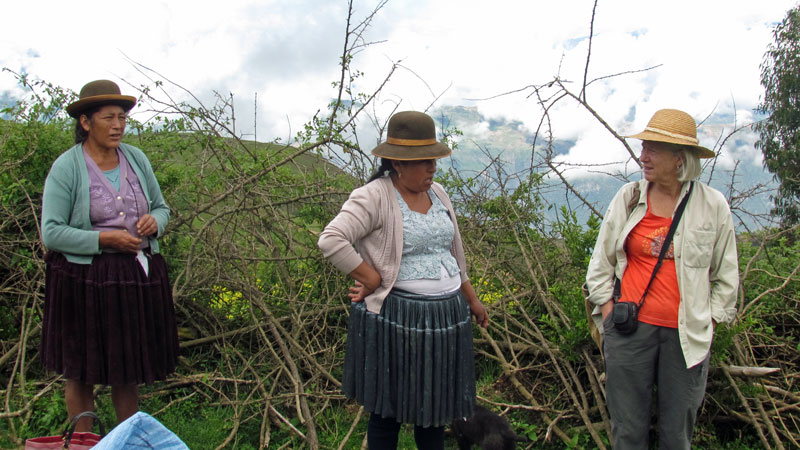
Dorinda lives in a lovely little compound with a gorgeous garden. Her quarters are modest: a few small rooms, with bathroom to the side. The kitchen is where she prepares her vegetarian meals. Local women are weaving yoga mat straps on their looms. The money that they earn pays for school and medical needs of their children. We brought them their largest order. At $25.00 each, they are a bargain. We will have more available soon. You can read about her project here.
The good news about the bus back to Cochabamba was that it did not leave at 5:00 a.m. The bad news was that it left at 3:00 a.m. But then there was more good news: there were no strike blockades on the way. Had there been, we would have had to walk or pay for a motorcycle ride to the next bus. Instead by mid-morning we were back at Hotel Aranjuez, very comfortable.
It was now back with Magri Turismo and our morning trip to La Paz. At the airport we learned that the flight was “closed.” This meant it had left an hour ago. Nobody had told us... We did catch a later plane and arrived about noon. Our guide, Hector, had been waiting for some time. He knew when the flight was due. Why didn’t we?
La Paz is the highest administrative capital in the world. It also has the highest golf course. Probably a lot of other highest things too. We in fact landed in El Alto, La Paz’ even higher, newer and less interesting sister city. We immediately boarded a cable car for a descent--some 3000 feet--into La Paz. The cable system is new, inexpensive and popular. There are three lines, with more to come. It does help relieve congestion in the city, but I wouldn’t want to drive there, or any place else in Bolivia.
We had lunch at the Hotel Oberland, whose proprietor is--surprise--Swiss. We told Hector about a Bolivian potter, a friend of friends . “He lives only a few blocks from here,” Hector said. That was how we met Mario Sarabia (more to come). Then we repaired to our hotel, La Casona, in a restored convent in the busy center of the old city.
Next day we were driven a few hours northwest to Copacabana, a lovely town on the shore of Lake Titicaca, the highest navigable lake in the world. It’s also very blue and beautiful. We took an hour boat ride to the Isla del Sol. After lunch a further boat trip took us to our hotel, La Estancia. Well, not exactly. The island has no motorized transport, and we had an hour-and-a-half walk ahead of us. Fortunately our day packs had been whisked away by unseen “porters.” The Estancia is an extremely eco-friendly group of cottages on a hill, with marvelous views. This was not tourist season; no other guests the day we arrived.
Next morning we made our way back down to the shore for a boat ride to Moon Island and the ruins of its ancient (pre-Inca) temple. Thence back to the main island. We had perhaps recklessly decided to hike most of the length of its spine, variously described as four or six miles. After the first bit, it was not steep, but enough effort for me. The skies were clear, permitting great views of the lake on all sides. We met--that is, were passed by--a number of tourists. Two of them were a young Korean-American couple, residents of Colorado. The wife complained “I don’t like this Peru.”
“You’re in Bolivia,” Susan said. This made little impression.
After that, back to La Paz and on to the Valle do Las Animas. It’s a beautiful canyon with mountains. A sudden rain can provoke a dangerous flood, very fast. The next morning we were driven to the world’s highest ski resort. The only problem is that there has been no snow since the 1980’s, and hence no functioning chair lift or other amenities. We were at about 18,000 feet, and it was chilly. Hector and our driver Vladimir, along with some Japanese tourists, scampered up another 500 feet for a better view. We stayed down below.
We had well in advance booked dinner at La Gustu, which TripAdvisor calls the best of 281 restaurants in town. We had just been seated when the hostess said, “You are friends of Jeff Merrihue. He phoned to say we must treat you specially! Come to the host’s table.” (Explanation: Jeff is the son of my friend Craig, who led our Harvard climbing expedition in 1957. He is a world-class foodie and has eaten at almost all the best 50 restaurants in the world. If you want to know a really good place to eat, Jeff is the one to ask.) The host’s table is in the kitchen, so we had a great view of the food preparation. The chefs are Danish, but all the other staff are Bolivian. So is the food--a delicious tasting menu. Our experience was enhanced by the presence of a couple of American photographers on assignment from The New Yorker. (The article and photos appear in the issue of April 4, 2016.) One of them, Ben Lowy, had been in dangerous places. We inquired whether he knew Jehad Nga, the photographer whom we had encountered at the tea plantation south of Darjeeling, India. “He was my roommate in Baghdad,” Ben said. Then we were abducted together in Libya.” Ben and his mother had graduated from Forest Hills High School in Queens, just like Susan. Ben was accompanied by Noah Friedman-Rudovsky, an American living in Bolivia, where he photographs Evo Morales.
The old part of town is crowded and full of interest and old buildings. Don’t miss the Witches Market . There are plenty of nearby hikes and mountains, some over 18,000 feet and presenting serious challenges.
On our final day Mario drove us 25 miles west to Tiwanaku. (Note: He could not pick us up at our hotel, because his car lacked the right licence plates for that day.) This is an extensive pre-Inca site, still under excavation. The stone work is remarkable. Don’t miss it. Afterwards we visited Mario’s home, a lovely compound full of flowers and trees. Here he works and teaches his craft. Have a look here.
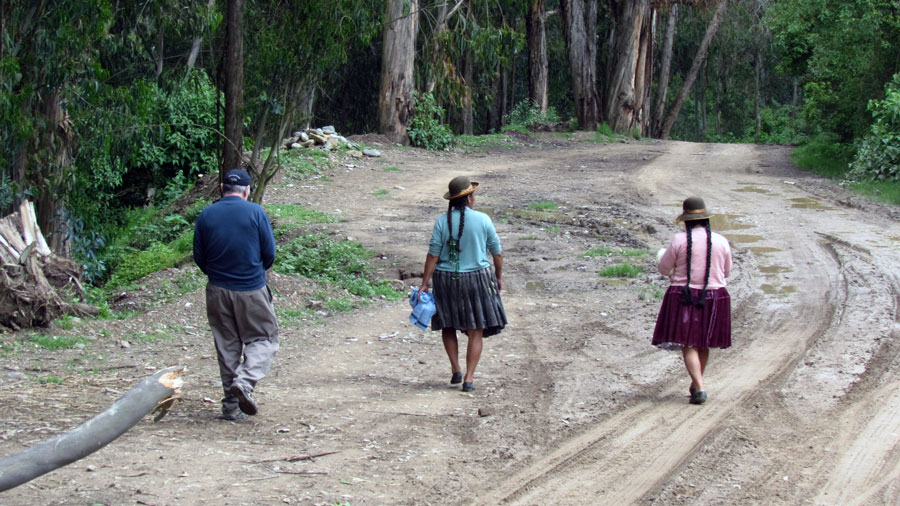
There are no direct flights from Bolivia to New York--it’s Miami or Lima. We chose the latter, and spent 3 or 4 days there. My previous visit had been with the climbing trip in 1957. I remembered nothing of the city, but it’s safe to say that it has changed. Certainly it has grown enormously, to its current population of nearly ten million. Except for a visit to the center and the market, we stayed close to our hotel in Miraflores. It is a lovely neighborhood, bordering on the Pacific Ocean.
We concluded with a series of memorable lunches. First was Central. 10-course tasting menu. Delicious and aesthetically presented in various pottery configurations. All items from Bolivia, The menu gave their names and heights of origin--from Marine Soil (clams), -20 meters to Andean Plateau, 3900 meters. Then Chez Wong, not open evenings, where you eat whatever that day appeals to the chef, Javier Wong, who has a big reputation. You also have your photograph taken with him. (We had ceviche and stir fry, very tasty.)
Final day lunch at Mado, Japanese-Peruvian fusion. Ten courses again. Very tasty again.
Susan's Narrative of Bolivia
Before we flew to Bolivia I met Steve in Panama where we spent one night. I visited the new Biodiversity Museum, designed by Frank Gehry, before Steve's arrival. The next day we went to the Panama Canal (a place we've wanted to see) which was as interesting as we had expected. In the evening we took a five-hour flight (it is a long way) to Santa Cruz, leaving in the morning for Sucre. (And yes, Bolivia is the only country in Latin America that requires a visa, equal in price to what Bolivian travelers must pay in the unlikely event that they get an American visa; fair, we thought, though a nuisance.)
In Sucre we stayed in a beautiful hotel that had been built as an administrative center by the Spanish in the 16th century; hotel was complete with a confessional in the sitting room, but no priest. We were lucky to be able to visit the Museum of Indignous Art, ASUR. (Lucky because the next day was the referendum on whether Evo Morales could have his term as president extended--he couldn't, 60–40 vote. There was no alcohol sold for 48 hours and nothing open, and no auto travel for the day!) This Museum is a gem, everything well displayed, good signage, fascinating work. The Museum specializes in the art of the Jalq'a Y Tarabuco of South Central Bolivia. The website, asur.org, gives a good, description of the work displayed. (For an article on this area see the N.Y. Times, “In the Mountains of Bolivia, Encounters with Magic,” 3/27/16. Wonderful description of an area beautiful and very off-the-beaten path.)
A book I highly recommend is Llamas, Weaving and Organic Chocolate: Multicultural Grassroots Development in the Andes and Amazon of Bolivia by Kevin Healy, an early Peace Corps volunteer. The book is a critique of many of the development efforts of the “developed world” in “undeveloped” countries. Of special interest is the effort to replace frost-resistant, indigenous potatoes (from the fucking home of the potato!) with an “scientifically improved” potato. Did it work? No! This fascinating book gives a good history of ASUR and similar weaving projects, some very successful, some not.
From Sucre, after not enough time in Potosi (silver capital of the world and one of the highest at 13,420 feet, where silver has been mined since the 16th Century) we flew to Cochabamba where we met Dorinda Dutcher. This was the start of our adventure, the trip to Independencia, around which this whole trip was planned! Two days spent in Cochabamba (supposed to be one but there was Steve's doctor's visit which is explained in his account. If you ever need a doctor in Cochabamba, Dorinda's the person to ask for help!) Saw little of the city; it was raining, we were obsessed with doctors, getting bus tickets--what passed as the ticket office has to be seen to be believed--in a little corner of the market, would NEVER have been found without D.) So we had lunch at a Hare Krishna vegetarian restaurant (recommended) and visited the market--always a favorite activity for me. Walked around past the Al-Anon meeting place (universal) and the Fucking Burger restaurant. (What do they think that means? Or don't they care?)
5:00 AM bus to Independencia. We were VERY lucky! There were no roadblocks on the way, or on 3:00 AM bus back! No need to hitchhike on motorcycles, or walk kilometers around the roadblocks. There is indeed a hill from the bus stop to Dorinda's--which all her visitors describe on her website. It's true! And BIG cobblestones to be carefully maneuvered. And a little town square with an (odd) small statue of a naked woman. What gives? And we were finally there! To learn more about Dorinda and PAZA see her website--pazabolviablog.com .
Dorinda is a friend from WARP (Weave a Real Peace), an organization created to “foster a global network of enthusiasts who value the importance of textiles to grassroots economies.” Also known as a fabulous group of--largely we must admit--women, many of whom are former Peace Corps volunteers and/or have worked internationally sharing their skills and talents. Who are also politically engaged at home, are tremendous fun and wonderfully supportive to each other. For the six years I've known Dorinda I've heard her stories of Doña Maxima and the other women in the Club de Artesanas. WARP members--younger, Spanish speaking, skills to teach and share--have visited in the past years. D and I talked many times about Steve and me visiting--and finally it happened!
Dorinda lives in a lovely, simple home with a beautiful garden shared with her landlord and landlady (and their many cats and dog, Dina). There is a large outdoor sink), lines for drying warps, a stove for dyepots, all that is needed when the women come with their completed work to sell to Dorinda, or to dye together, or to hang out and give each other advice about their weaving, or their lives. Some of the women who live in Independencia are there on dyeing days during rainy season when there are dye plants in profusion. On Sundays women stop by after selling their produce at the market to sell what they have completed during the week, or pick up dyed yarn for their next project. Dorinda and Doña Maxima are encouraging the school girls to learn to weave both to maintain the tradition but also to bring in some badly needed money to their homes. The yoga mat straps are a great project as they are completed rather quickly (compared to a bag which requires at least 20 hours of weaving!) Doña Maxima is a Quechua and Spanish speaker; the younger girls have learned Spanish in school and are bi-lingual, unlike most of the older women. The comfortable language of story telling and gossip is Quechua--so at least Steve and I didn't have to feel so bad about our very rudimentary Spanish.
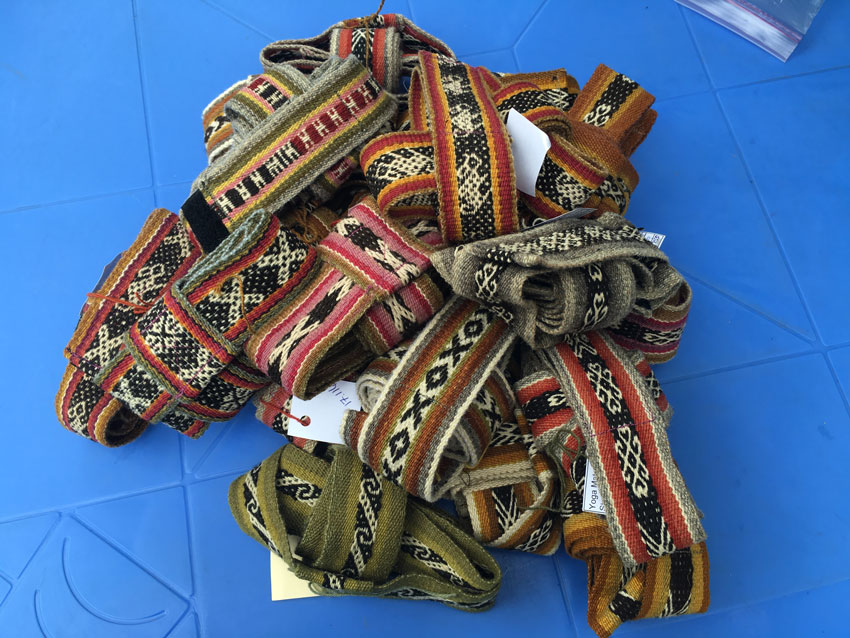
Steve and I stayed in the (only) hotel--name forgotten but if you want to stay there we'll look it up---a room with three beds, large kitchen with refrigerator! (quite a luxury) and stove and a bathroom with occasional water. A five minute walk from Dorinda's. Our room looked out the one of the schools, a large sports field (rarely used we're told) and an enormous “coliseum,”--big enough to fit a large part of the town of about 2,000 residents. This last is a “gift” from the government; who was asked if they preferred this to sinks for their homes? We can report that the school has a band that practices for hours; we are witness to this as we heard them practicing "Bridge Over Troubled Waters" for at least three hours without the trumpets ever getting it right.
Our days were spent going to the market to buy food for breakfast (buy six eggs, even if you only want four, because This Is How They Are Sold). Then we went to Dorinda's where we might go for a stroll to pick flowers for dyeing, or sit and read while dyeing was going on, or hire a truck for an hour drive and several hour walk to buy alpaca fiber and see the beautiful countryside--in the rainy season (though we were lucky to have very little rain). I had brought two silk scarves that were dyed in the dye baths; why didn't I bring more? Guess I have to go back! Dorinda bakes bread and treats for the women and girls in the Club; we certainly enjoyed these treats!
The women are weaving yoga mat straps, which are sold and transported to the US by D's visitors, or by D when she visits once a year. Postage and mailing from Bolivia are too expensive and cumbersome. I came with orders for twenty, sold in US for $25.00 each. I did not bring enough back (they were all sold before I even got home). Luckily Dorinda will bring more when she visits in May. They are strip woven, natural dyed, of wool spun by the weavers; these women NEVER have idle hands! We also brought back several beautiful chuspes, shoulder bags – again all sold by the time we got home; more coming in the Spring! The money for these handwoven items goes directly to the weavers who need to buy school supplies and medical care for their children. They are quite thrilled to have this income over which they have direct control.
After five days we returned to Cochabamba, on our way to La Paz. On the return Steve was happy? to learn that the bus left at 3:00 AM, rather than 5:00 as it did on the way there. But, after the driver turned off the loud music, it was an uneventful drive. A night in Cochabamba, last pizza meal with Dorinda, and off to La Paz for three nights!

Although La Paz is the highest administrative capital in the world (Bolivia has functions of the capital disbursed between different cities--don't ask!) we did not experience any altitude problems as we had been at slowly increasing altitudes since our arrival in Bolivia. We stayed at a wonderful old hotel in the downtown of La Paz, in easy walking distance from museums, shops and restaurants. When I say that La Paz is busy, it's an understatement! People are out buying breakfast on the street by 7:00 AM and there are crowds! There were stands across from the hotel selling only hamburgers, open from 10:00 p.m. to 6:00 a.m. Only hamburgers! Crowded as the streets were, it never felt unsafe (which is what I'd say about every other city we visited on this trip). People were so kind about our linguistic errors and misunderstandings, especially when giving us correct change for our sometimes enormous overpayments.
We visited two outstanding textile museums in La Paz. The first is small and privately owned; Museo de Textiles Andinos Bolivianos. The exhibit explained that, just as an offering is made to pachamama every time an endeavor begins (“a sweet table in worship;” I like that!), an offering must be made when people weave. The small museum explored the weaving process and structure and had a map of the Bolivian regions where traditional textile work continues. They had wonderful exhibits of work from throughout the country, with good explanations. (By the way, Bolivia has 36 indigenous groups recognized by the country's constitution.) The second was the National Museum of Ethnography and Folklore, a short walk from our hotel.
We did some hiking around La Paz; it takes amazingly little time to get out to beautiful countryside. The geology of the area is astounding. We also spent two nights at an eco-lodge on Isla del Sol in Lake Titicaca; for more on that see Steve's write-up. A highlight of this visit--in addition to the wonderful hiking, views, flowers, people, accommodation--was meeting the Korean-American couple who complained that they did NOT like Peru (indeed part of the Lake is in Peru). We pointed out that, luckily or not, they were actually in Bolivia. They were not impressed.
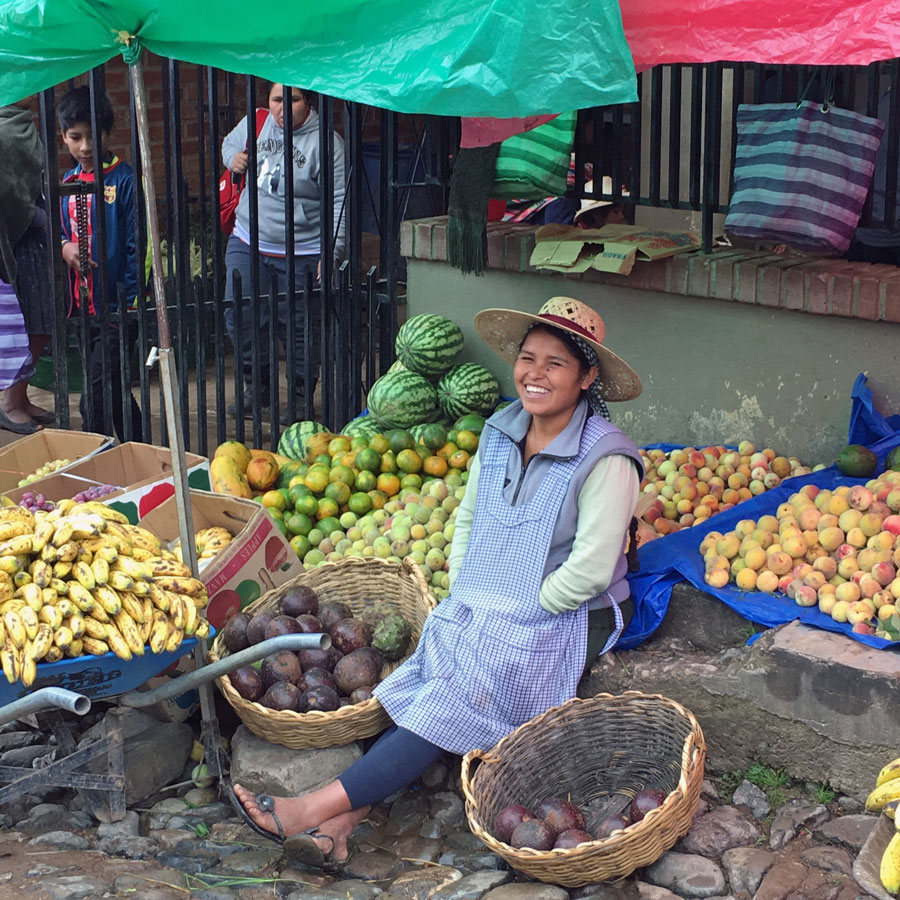
A great treat on our last day in La Paz was a visit to Tiwanaku, a pre-Columbian archaeological site two hours from La Paz. (I'm not happy with that term; how about "Pre-Conquest”?) This was a culture that flourished between 200 – 1000 CE; it is believed to have had a peak population of between 30,000 and 70,000 residents. The civilization collapsed around 1000 CE, possibly because of attacks from other groups and eventually because of excessive drought. We were incredibly lucky to visit the site with Mario Sarabia, a Bolivian ceramist (ceramicsarabia.com) and friend of friends in NY. Mario--whose studio we had visited the day we arrived in La Paz--picked us up at a lovely public square near his home. There is a system to limit traffic downtown and Mario's license plate does not allow him to drive in every day; this system seems to do little to reduce traffic but we can only imagine what it would be like without it!
Seeing the site with Mario was traveling with the best guide we could imagine. Not only does he speak Spanish (although, being of European ancestry though for many generations, he had to produce his identity card to prove he was Bolivian and entitled to resident privileges) but he has worked with ceramists on the site and is very familiar with the history and the pottery. So we got the advantage of his knowledge; we also had a lot of fun!
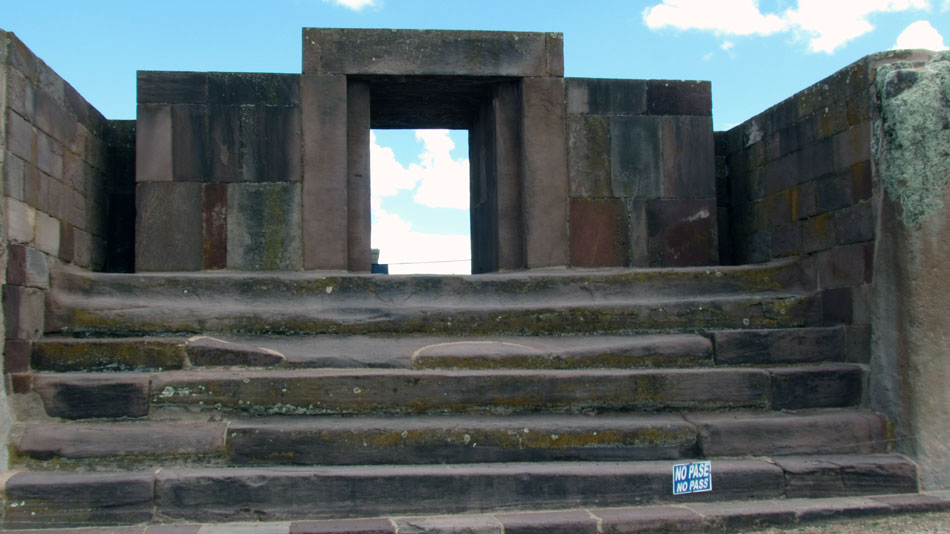
We met fascinating people both in Colombia and Bolivia. At Gustu (see the New Yorker, April 4, 2016, “The Tasting Menu Initiative") we were welcomed and told that friend Jeff had called to ask them to treat us well. They did, sitting us at the “Chef's Table” in the kitchen. In addition to the great food it was fun to meet the New Yorker photographer, Ben Lowy, a New Yorker who went to my high school in Queens, as did his mother, and Noah Rudovsky-Friedman, from Philadelphia who is Evo Morales' photographer and also an outstanding photo-journalist. Hang around the right places.......
We spent the last three days of our vacation in Miraflores, Lima, Peru, a beautiful neighborhood where I had stayed when in Lima two and a half years ago. Our hotel was a five-minute walk from the Pacific, with wonderful parks along the sea (water much too cold for swimming without body suits--which we did not try!) We finished up our trip with lunches at three great restaurants, all recommended byJeff Merrihue, fan of good eating around the world! At Chez Wong (lunch only, six days a week, ten tables, reservations a must, in a house in a somewhat dingy neighborhood) the only meal served is ceviche and “wok,” meaning stir-fried fish with veggies. As many orders as you want. We were modest--compared to other eaters--and only shared one portion of each. Beer, or wine, or water. That's it. And delicious!
In Lima we--again--visited two great museums. I had visited Larco Museum before but wanted to make sure Steve saw it. This is another privately owned museum, as is the last one I visited. Housed in a former mansion the museum has a collection of 3,000 years of ceramic, textiles (though not many) and precious metal artifacts. Visitors can also visit the store rooms to see what is not on display; thousands of pots in perfect condition – how were so many preserved is the obvious question. It is also great fun to visit the room of erotic archaeological pieces; as an article says “these are not run-of-the-mill phallic symbols but the kama sutra in clay.” Wow.
The last museum visited on this trip (except briefly a new modern art museum which had a few we thought odd displays but the BEST fruit drink I've ever had) was AMANO, Museo Textil Precolombino. This – again – privately owned museum displays Amano's collection of textiles and ceramics of the Chancay culture. The Amano has only recently been opened to visitors without reservations and is a great addition to a textile tour in Peru.
Traveling in South America--as Steve and I have found in many visits--is a real pleasure. Hotels we have stayed in range from good to great (many old colonial buildings restored; not only beautiful but often with fascinating histories and furnishings). We took many intra-country flights, all on time; they even FEED you for a 45-minute flight, and treat you with respect; how strange is that? Guides are professional, well informed, generally very interested in sharing their stories and in answering questions. Cities feel as safe as any in US. People were very kind about our very poor Spanish, and helpful. Wifi everywhere; well, Independencia a little sketchy! Beautiful! GREAT FRUIT and the best fruit juices I've ever had! And great ice cream! (Reason enough to go in my book.)
Susan in Colombia
My trip to Colombia originated with a visit (actually three) to the show, Waterweavers, at the Bard Gallery in April, 2014. It was one of the most powerful shows I've ever seen (there is an excellent catalog available). The show, while exhibiting crafts, weaving, natural dyeing, videos, was about the impact of ongoing violence on the life of the country. I came to it with an interest in textiles, of course, but also with an interest in Colombia. At my first job (1972, in Elizabeth, New Jersey) I worked with a woman who was, I'm sure, the first from that country I had ever met, probably the first South American too. I vividly remember her talking about La Violencia, which had wracked her country since the late 1950's. Little did we know or imagine that the violence would continue for the next sixty years. Or longer. Also, and not irrelevant, I have fallen in love with Ajiaco, though arepas aren't bad either! Sadly, I discovered that I like the Ajiaco (a chicken soup with corn, avocado, lime) better as prepared by a restaurant on Lexington Ave (Dulcha Vida Cafe) than anywhere I had it in Colombia.
As I was planning my trip I began my usual exploration – talking to anyone I knew who had visited there, reading fiction, memoirs, history. I did not realize how much
Colombian literature there was in addition to Garcia Marquez, of course. (I'll put a short list of the books I found most interesting at the end of this account.) The next step was finding that Jordy, a friend for many years--and fluent in Spanish--was interested in traveling with me. For varied reasons, our husbands were not going to join us. Steve would join me in Panama, on our way to Bolivia, when Jordy returned to the U.S.
After not enough time in Cartegena (never even got to the beaches) we took a five-hour drive (meaning we were driven by a friendly, helpful driver) to Santa Marta, also on the Caribbean; the first Spanish settlement in Colombia (established in 1525). Santa Marta is the point from which travelers can easily get to Tayrona National Park. Santa Marta is known for its Gold Museum; the Museum is in a building dating from 1531 and recently reopened. In addition to the wonderful gold exhibits, it has a good exhibit on weaving and spinning done in the area before the Spaniards invaded. There are indigenous groups in the area that continue some of these textile arts. The building also houses the room where Simon Bolivar was laid out after his death from TB. (The monuments to Bolivar in Colombia and Bolivia feel a little like “George Washington slept here signs in the Eastern US”).
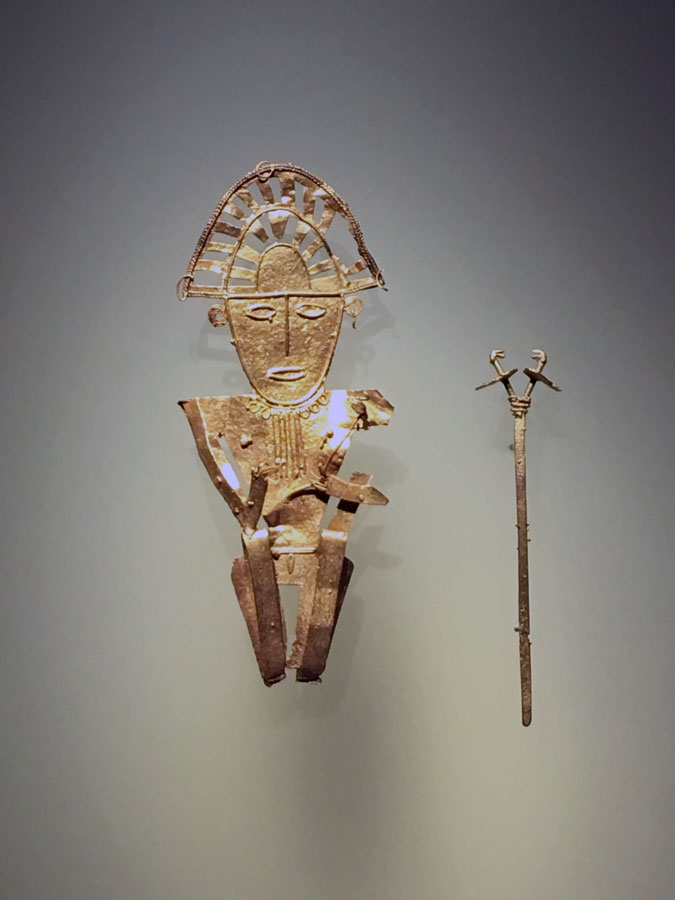
We spent a wonderful day hiking and swimming at Tayrona National Park, a one-hour drive from Santa Marta. The Park is closed to automobile traffic so visitors can either hike or go by horseback to one of several beaches. We hiked an hour to the first beach accessible. There is camping available, motel-like rooms for rent, and a (good) restaurant. Also--a great treat---a “panderia” where chocolate bread is baked. A lovely day!
The next day we flew from the nearby Santa Marta airport to Medellin. I was particularly interested in visiting Medellin as I'd read about its public transportation project which was explicitly planned to “drive societal change.” The Metro, which carries over ½ million passengers a day, was completed in 2006. The Metro Cable, which provides mobility and access for the poorest citizens who live in the hillside favelas above the City, was completed in 2010. (AND there are attractive libraries in Metro stations!) Medellin has made huge strides in recovering from the influence of Pablo Escobar and the drug cartels; there is an Escobar tour available – visiting his grave, homes, etc. We chose NOT to take it!
The Museum de Antioquia had a wonderful exhibit, Medellin International Art Encounter – El MDE15; we saw the 3rd “edition.” The theme was “Local Stories/Global Practices.” The work in this show--while not textile oriented--reminded me strongly of the Waterweavers show. It was especially moving to see school children at this exhibit, which reflects the violence that has torn apart their country, even as efforts toward peace are occurring. The show included video, photography, graphic works, found objects; one display was paperwork that had been filled out by people trying to reclaim property that had been dishonestly taken from them.
(Did you know that in Colombia, as of June, 2014, 6,000,000 people were registered as being internally displaced, second only to Libya? And these are the people who are “registered.” These are people who had to leave their communities due to the paras, the army, the guerrillas, the mining companies (Colombia has the largest open pit mine in the world), agrobusinesses that force campesinos from the land, the narcotrade. And all of these people eventually move to the overcrowded cities). BTW, as seen in the photo below, Medellin has public toilets--which is more than we can say for New York.
We finished our busy day by taking the Metro Cable to its highest point, changing where the city slowly ends, to travel an additional twenty minutes to an unexpected park and wilderness area, just above Medellin, Arvi National Park. But--for reasons unexplained--most of the walking trails were closed. Forced to give up our walk, we returned to the Metro Cable and the city. We were disappointed to be unable to visit the Bibliteca de Espana, which opened with great fanfare in 2007. Since April, 2013 it has been unusable, as construction “did not adhere to architectural plans.” In addition, there were “unexpected” landslides so the buildings are covered in black material while “repairs are made.” It is an enormous eyesore hanging over the city, and a major embarrassment, I assume.
The next day we left on the long drive to Pereira, the heart of the coffee growing region of Colombia. We stayed at the beautiful Hacienda Sazagua; swimming pool, massages, good food, enormous room and bathroom; in NYC the bathroom would be rented out as an apartment. Spent one day visiting local towns, drinking coffee, walking in Los Nevados National Park. On the drive we passed a burned out building, former home of Pablo Escobar or one of the drug barons; kept as a burned shell as a reminder we were told. Also passed a neighborhood of homes built for campesinos who had been forced out of the countryside because of violence; supposedly/hopefully people are being housed and trained for new jobs. This, obviously, is a long and difficult process as so many people have left the countryside for the cities.
Our last flight--before Jordy's home and mine to meet Steve in Panama – was to Bogota where we met the best guide ever, Valeria. I should mention the role that guides play on a trip like this. They are a source of information not only about local history and sights but also about life in Colombia. All of our guides were comfortable talking about their families, education, the violence, the peace process --which sadly all of them are doubtful about, though with varying degrees of hope. Guides in South America have generally got a college degree in tourism and are quite well informed. From our guide in Pereira we learned a little about his life in the Army as a young man in a counter-terrorism group; army service is compulsory--sort of! If you finish high school you serve less time; if you go to college you serve even less time. And if you're a wealthy screw up (like one of our guides) you can pay your way out.
When Valeria and a driver picked us up in Bogota, we got on the road to Villa de Leyva; a four-hour drive got us to the small colonial town where we spent two nights in (another) lovely Colonial hotel. Villa de Leyva is in a high altitude valley of semi-desert terrain; the area has no resources to exploit and the area has changed little over the years (which is why it is on the tourist trail). The streets are paved with cobblestones (walk very carefully) and many buildings date from the 16th century. We arrived at the end of the Astronomy Festival, a yearly event that attracts amateurs and professional astronomers to the town. This event takes place in the Plaza Mayor, which at 14,000 square meters is the largest square in Colombia.
The area is rich in fossils from the Mesozoic and Cretaceous Eras; it was amazing to see walls cemented, covered-- with fossils. Also interesting to see was a near complete kronsaurus discovered in 1977. The Museum was built around the dinosaur and it is displayed in situ.
It was while visiting an astronomic observatory (with many phallic stones--go figure. The Spanish were not too thrilled with these and destroyed many of them) that we met an interesting family who invited us to their home the following day. Parents are artists, daughter a young film student; they had left Colombia when their twin daughters were in high school because of the violence and moved to Toronto. They have returned to Colombia as they feel they can live there safely now. Their home is quite beautiful, designed by the wife and full of their art work; they have a tiny ice cream parlor and make great ice cream.
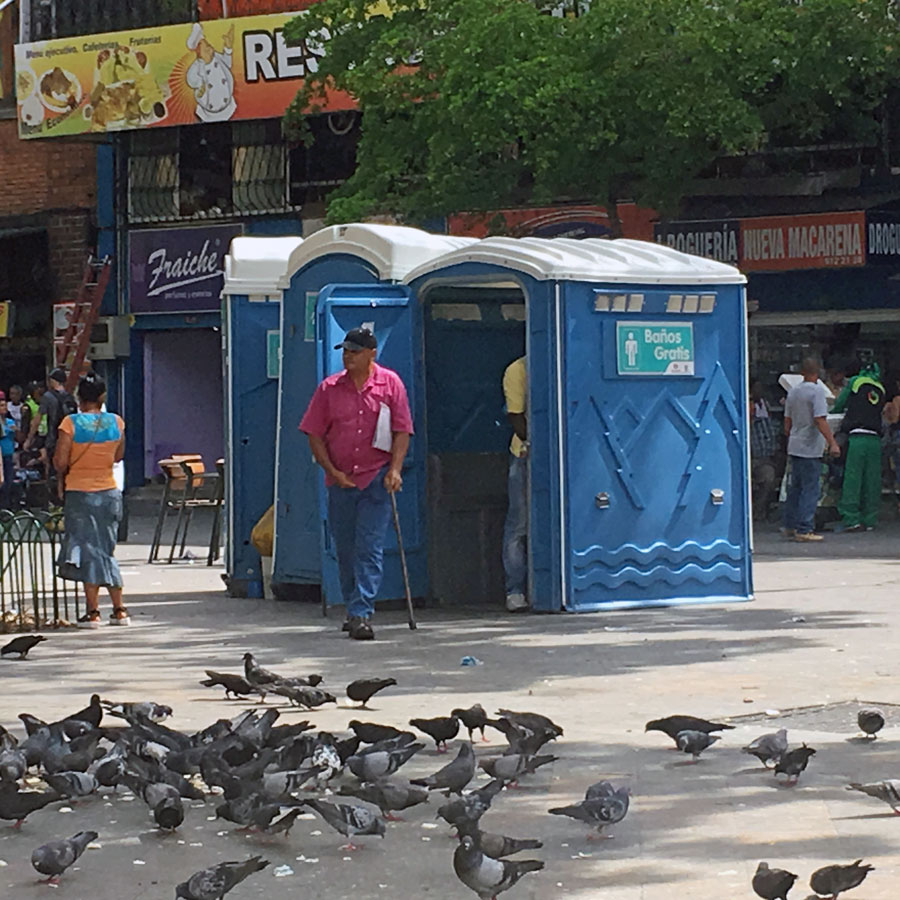
Another treat for me was a--short--horseback ride. A short ride as the arrangements were--surprise--not arranged and I was picked up late, making this a one-hour rather than two-hour ride. The biggest surprise was--for a tiny price--I got not only a horse back ride but a motorcycle ride to the stable, two for the price of one.
Our last visit in Colombia was to Bogota which I liked more than I expected. (What did I expect, you may ask? A large overcrowded impoverished city with a lot of cops where I wouldn't feel safe.) Yes, there were more--and more heavily armed--police than we had seen anywhere else. We discovered two kinds of guard dogs--the ones belonging to the police were on strong leashes and tightly held. The ones that the Army had which were bigger, fiercer and scary as hell--though tightly held. And yes, there are poor people and beggars and homeless--but I live in New York City, so this was nothing new.
We did enjoy the fabulous Gold Museum. (Even though it doesn't have textiles. I try to be open minded.) We stumbled across a small museum, Regional Costume Museum of Colombia, which was close to our hotel. It is in the home of Manuelita Saenz, “tireless” companion of Simon Bolivar; does that mean she was his mistress? Wikipedia says “yes.” The first floor was dark and uninviting, with costumes--many of them recent--from different parts of the country, with little information. The second floor had examples of indigenous looms and weaving and information about how weaving and textiles changed with the Spanish who introduced floor looms.
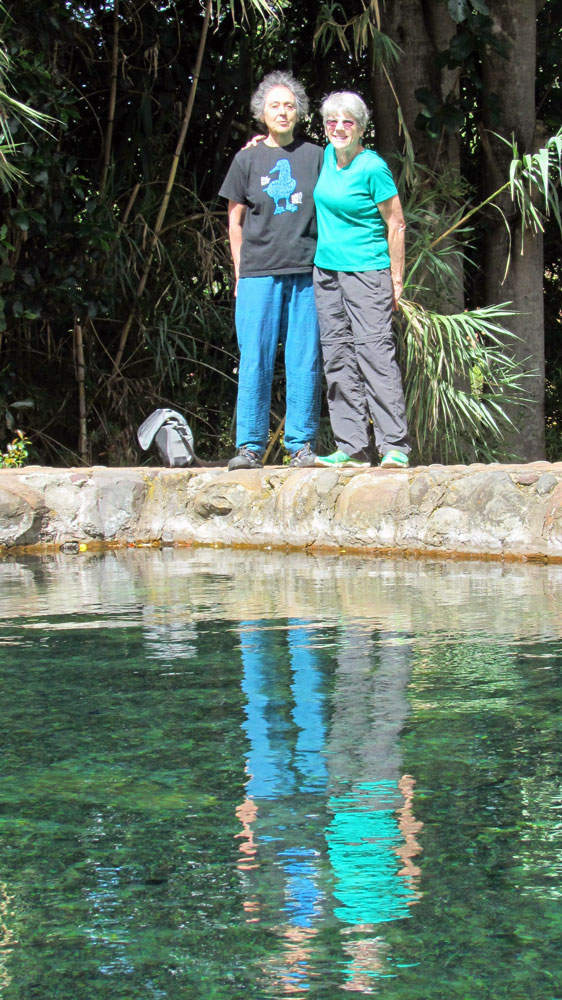
Oops, can't go to Bolivia yet because I forgot our Graffiti Tour (free!) in Bogota. A must see, if you find yourself in Bogota. It is legal to paint/draw/decorate walls with the building owner's permission, which is generally available. This has created an incredible canvas for artists who now come from all over the world to participate. Much--though not all--of the work has political content and the artists are known in the community for their interests and work. I also can't leave out the wonderful chicha which we shared with our guide (and now friend) Valeria and her boyfriend, David. Thank you, V and D. for sharing chicha and your educated insight into Colombia and the possibilities of peace and reconciliation.
ADDENDUM (Books I'd recommend):Very little Bolivian fiction translated; try The Fat Man from La Paz (short stories)
Colombia--short list of the many fine books:
Fiction: Laura Restrepo, Juan Gabriel Vasquez, Vanessa Blakeslee, Evelio Rosero.
Non-fiction: Short Walks from Bogota, Thomas Feeling; Oblivion, Hector Abid Faciolince, Robber of Memories: A River Journey Through Colombia, Wade Davis, One River: Explorations and Discoveries in the Amazon Rain Forest (insight and information on many of the very young guerrillas who know no life other than living in the jungle, are illiterate often, and sadly often very unprepared for peace).
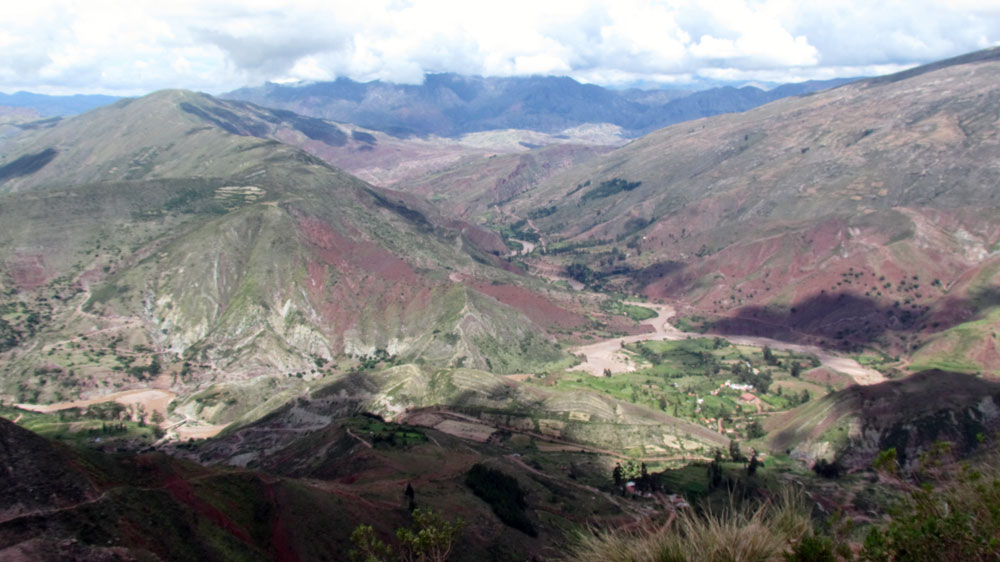
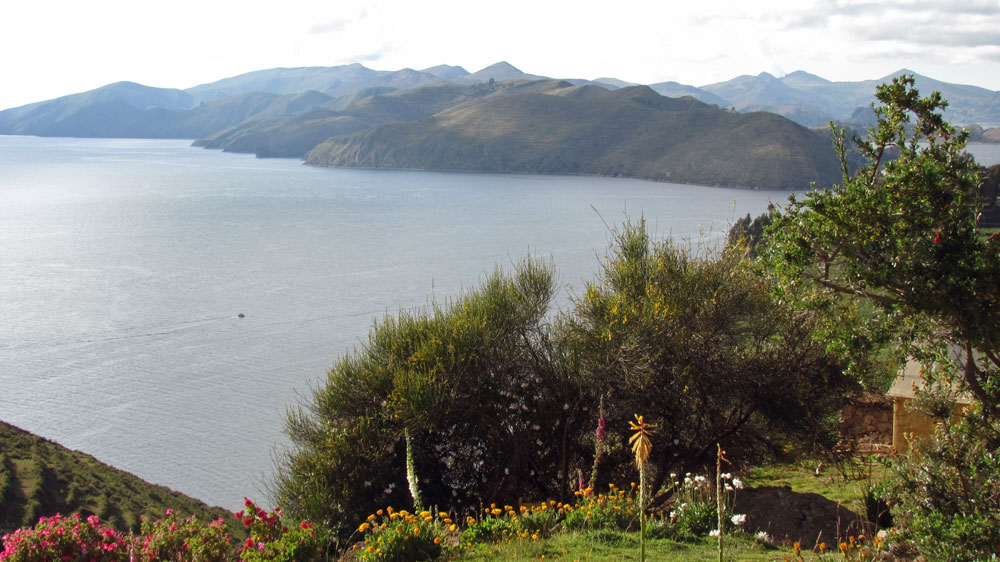
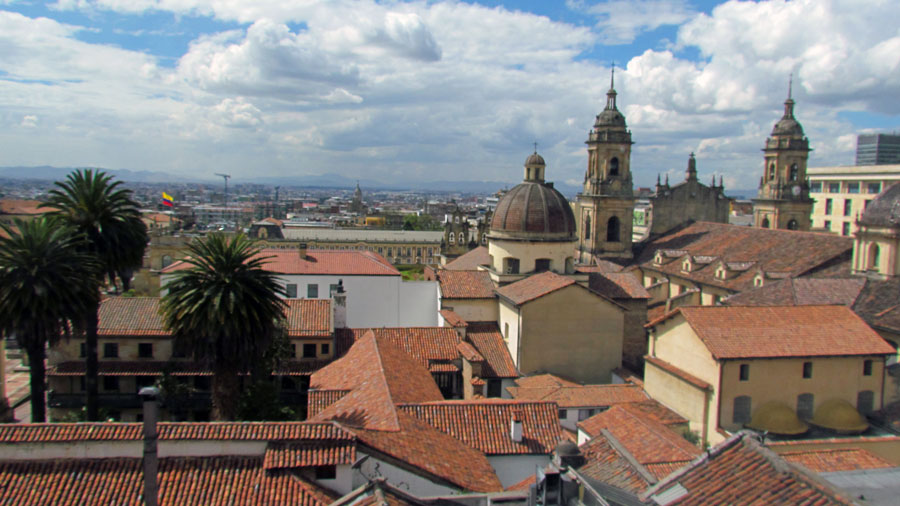
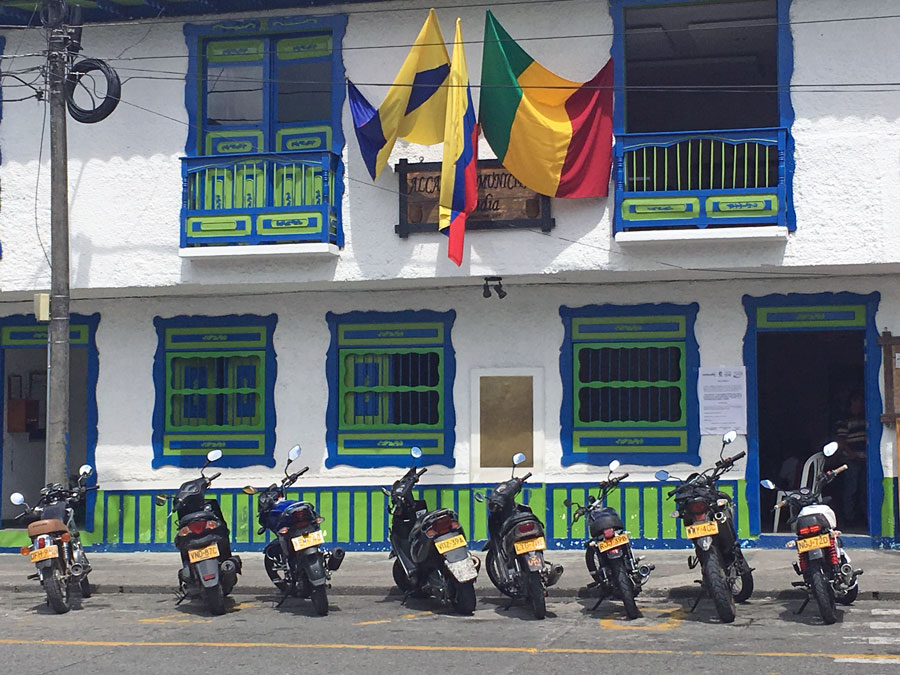
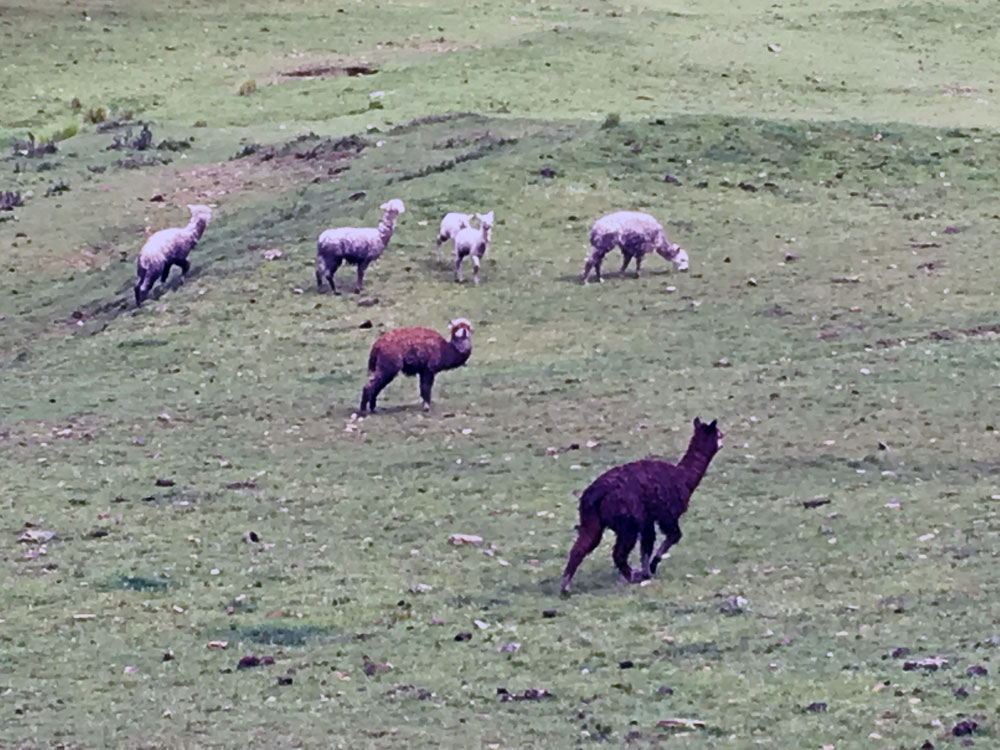
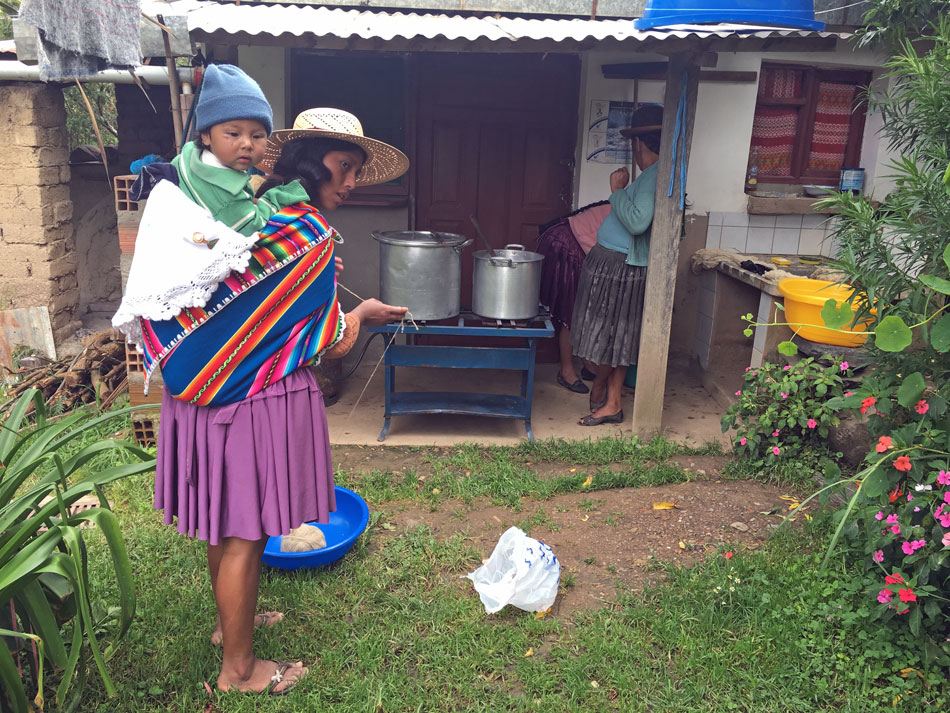
Return to Climbing page.
Return to travel page.
Return to home page.